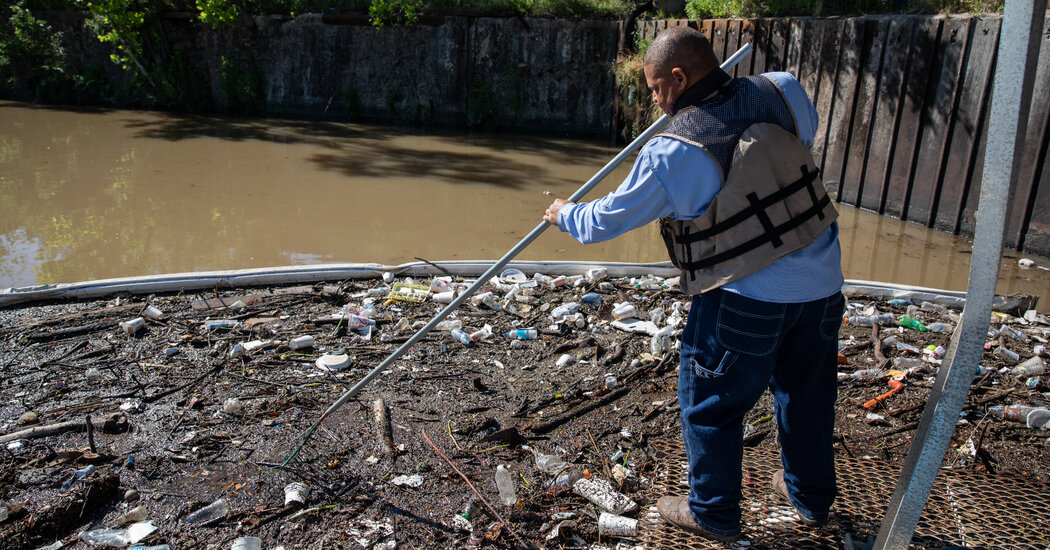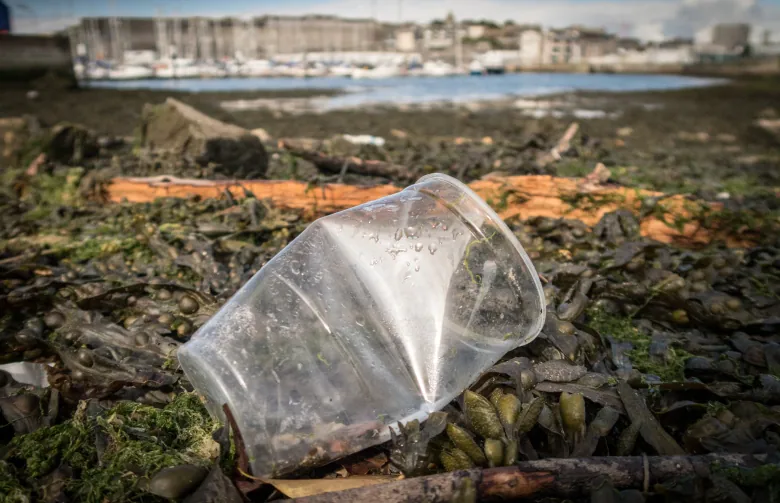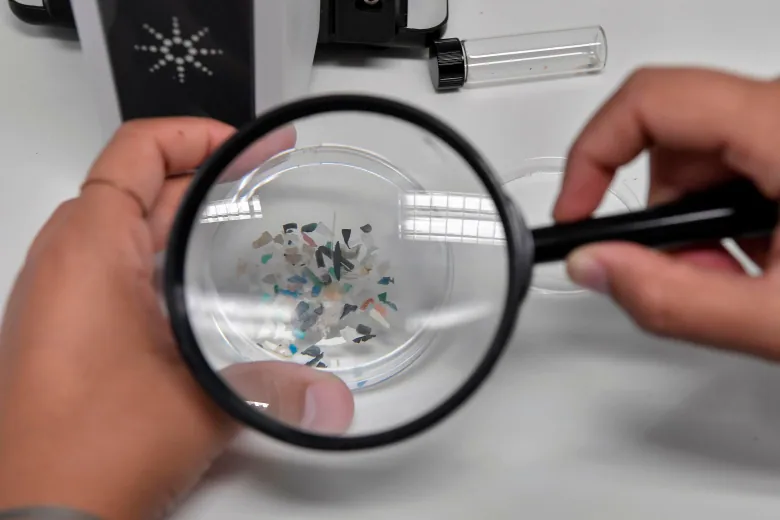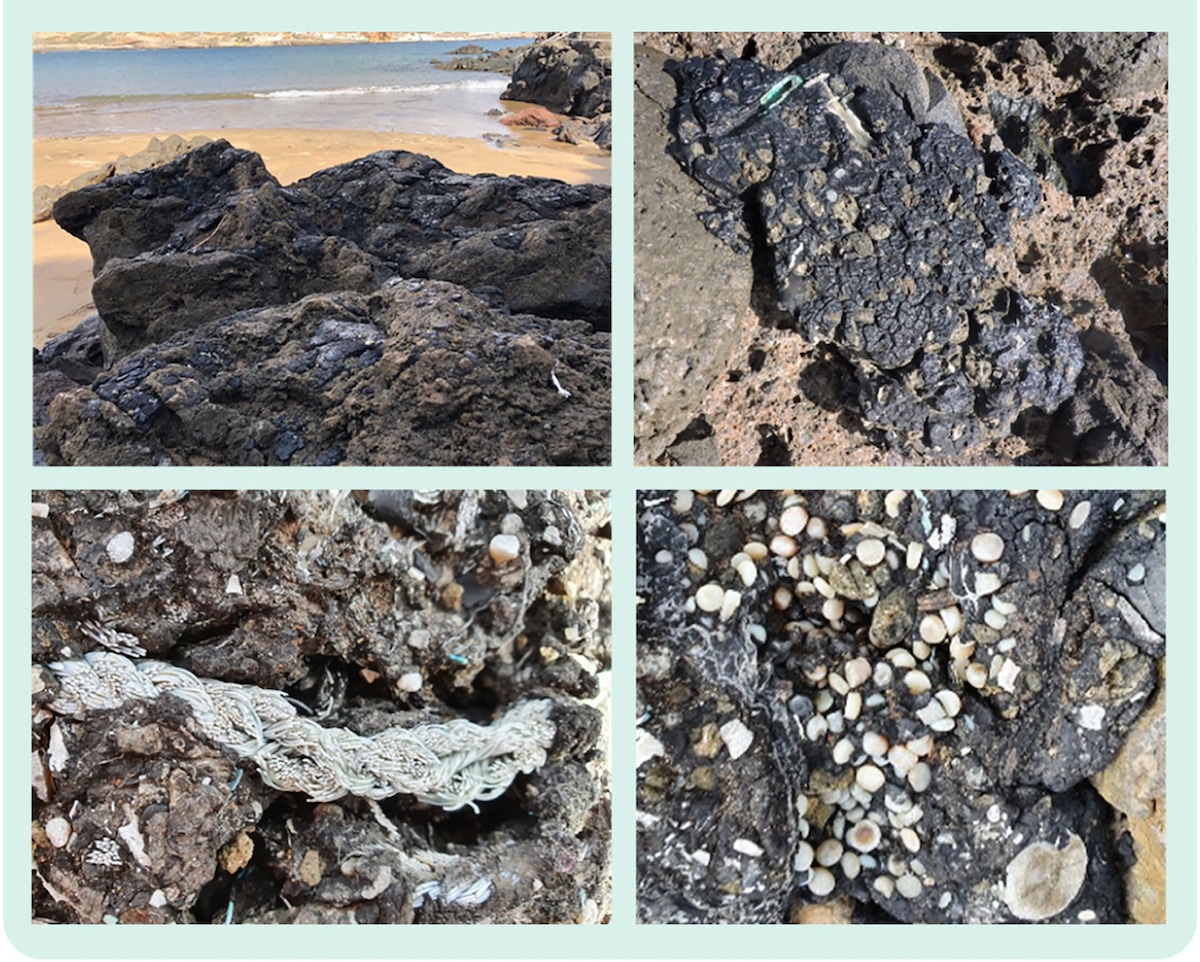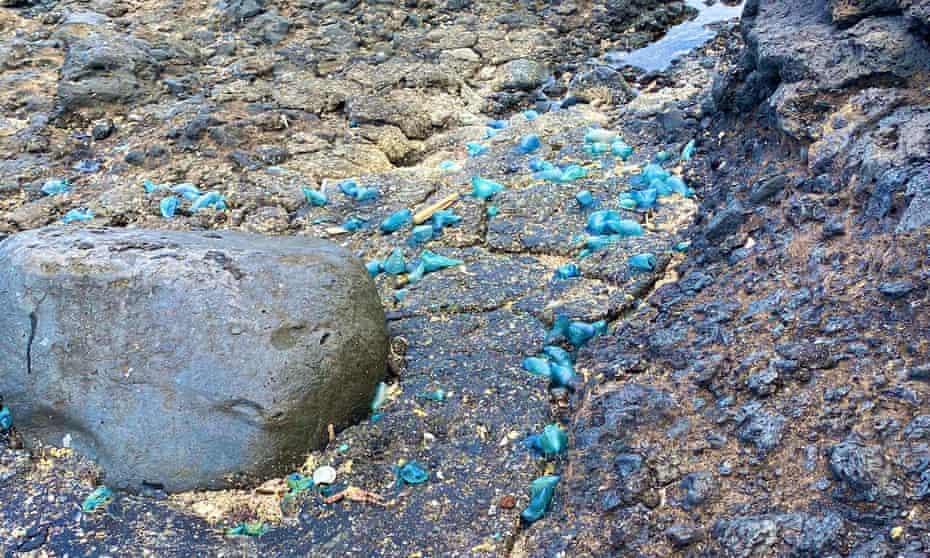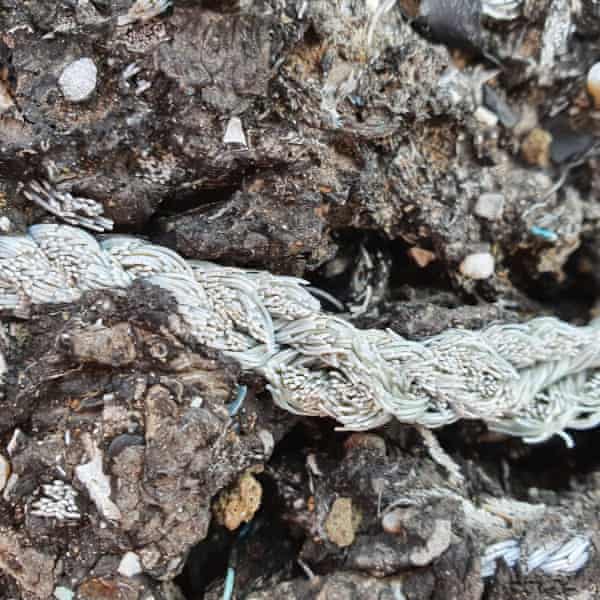When Brittany Goldwyn Merth ripped up the carpets in her Maryland home in March 2019 and laid down vinyl tile, she meticulously documented the process. Merth is a do-it-yourself influencer, part of a growing group of well-coiffed women who track their home improvement projects online through sleek videos and posts studded with affiliate links. To her 46,000 Pinterest followers, she details tips for Ikea hacks, plant care, and what she calls “approachable woodworking.” After researching flooring that was affordable and easy to install, Merth settled on Home Depot’s Lifeproof line: vinyl planks made to look like wood that lock together without glue. Simplicity was part of the sell. “Buy it today, install it today,” the blond woman in the Home Depot ad promised.
Merth was pleased with the result, and she wrote a follow-up post a year later, as the coronavirus pandemic was spreading throughout the world and professionals with spare cash were overhauling their homes. Middle-class Americans were entering an era of immense choice in the workplace; at many companies, it was possible for the first time ever to work from practically anywhere. They just had to figure out where to put the home office.
In two blog posts on her flooring project, Merth linked to Home Depot’s Lifeproof page over a dozen times. But she didn’t realize at the time that the simplicity promised by Home Depot comes at an immense environmental and human cost. Vinyl flooring is seeing a surge of growth, boosted in part by pandemic-era renovations. The industry calls it “luxury vinyl tile.” In reality, it is layer upon layer of thin plastic, a heavily polluting concoction made with fossil fuels. Very often, a new report shows, that plastic is produced using forced labor.
The story of vinyl flooring begins 6,600 miles away in the Xinjiang region of northwestern China, where it is intertwined with the persecution of the predominantly Muslim Uyghurs. The same month that Merth wrote her 2020 blog post, in a village in southern Xinjiang, 30-year-old Abdurahman Matturdi was herded onto a bus emblazoned with the words “Zhongtai Chemical.” That’s short for Xinjiang Zhongtai Chemical Company, a Chinese government-owned petrochemical firm that is one of the world’s largest manufacturers of polyvinyl chloride, or PVC, a type of plastic that is a critical ingredient in vinyl flooring. The World Health Organization had just declared Covid-19 a pandemic, and factories across China were shutting down to protect workers and prevent the coronavirus’s spread, but Zhongtai’s PVC plants were humming. Matturdi, whose story is detailed in a post on the company’s WeChat account, left behind his wife, newborn baby, and ailing mother. Hours later, he arrived in the regional capital of Ürümqi, where people in his group were assigned dormitory beds and given military fatigues to wear. Instead of watching his baby learn to walk or caring for his mother, he would spend his days laboring in Zhongtai’s facilities, exposed to both toxic chemicals and a frightening new virus.
Zhongtai did not respond to a detailed list of questions from The Intercept.
Merth and Matturdi are connected by a troubling supply chain. At one end is Zhongtai, a mammoth state-owned enterprise with close ties to the Chinese Communist Party that is among the top users of forced labor in Xinjiang. By its own account, Zhongtai has brought in more than 5,500 Uyghurs like Matturdi to work at its factories under a government program that human rights advocates say amounts to a grave injustice. To make the plastic resins that go into the flooring under Americans’ feet, Zhongtai belches greenhouse gases and mercury into the air. Its executives uproot lives, tear families apart, and expose workers to coal dust and vinyl chloride monomer, which has been linked to liver tumors.
At the other end of the chain are many major flooring companies, small contractors, and Home Depot. “The Home Depot prohibits the use of forced or prison labor in its supply chain,” a spokesperson wrote in an email. “This is an issue we take very seriously, and we will work to review the information in the report and to take any additional steps necessary to ensure that the product we sell is free from forced labor and fully compliant with all applicable regulations.”
The new report, by researchers at Sheffield Hallam University’s Helena Kennedy Centre for International Justice in England and at the Maine-based toxic chemical investigative outfit Material Research, details the toll taken by the flooring industry, painting a devastating picture of oppression and pollution in the Uyghur region, all to help consumers in the United States and other wealthy countries cheaply renovate their homes. The report calls on the industry “to identify its risk and extract themselves from complicity in Uyghur forced labor.” It also asks all companies that source from China — including Home Depot — to scrutinize their supply chains.
The report is “very significant,” said Scott Nova, executive director of the Worker Rights Consortium, an independent labor monitoring group that was not involved with the research. “It has major implications for the retailers and marketers of flooring. And there are a lot of people walking around their homes right now on floors that are virtually certain to be made in part with forced labor.”
Fully 10 percent of global PVC comes from the Uyghur region, the majority of it from Zhongtai. From Xinjiang, Zhongtai’s PVC resin is transported to eastern China, India, and Vietnam, where it is turned into flooring before being exported to the U.S. and other parts of the world. PVC is also used to make everyday products like shower curtains and credit cards; the Sheffield Hallam and Material Research team says it is likely that Zhongtai plastics are used to make PVC piping for global buyers.
The researchers focus in part on a flooring factory in Vietnam called Jufeng New Materials that supplies Lifeproof tiles to Home Depot, via a Georgia-based company called Home Legend. Over one-third of Jufeng’s imports of PVC resins come from Zhongtai, shipping records show. Another half come from Jufeng’s parent company in eastern China, which itself sources heavily from Zhongtai. All of this leads the researchers to conclude that the Lifeproof line is at “high risk of being made with Xinjiang Zhongtai PVC.”
The Home Depot spokesperson sent The Intercept a letter from Home Legend, dated June 10, claiming that Jufeng’s parent company had assured it that Xinjiang PVC was not used to produce flooring for the big box retailer. The spokesperson also directed The Intercept to a Home Depot report stating that it audits suppliers to ensure compliance with “human rights, safety and environmentally sound practices,” including a ban on forced labor. Home Depot did not answer questions about when it last audited Home Legend or its downstream factories. Home Legend did not respond to requests to comment.
Researchers, customs officials, and journalists have previously documented a disturbing array of products linked to Uyghur forced labor, including surgical masks, laptops, cotton, solar panels, and wigs. But PVC flooring adds another dimension: severe health and environmental effects. The report details how workers involved in its production breathe in several toxic substances, including carcinogens, and how massive amounts of climate pollutants are released in the process of creating plastic resin for flooring.
Tainted Supply Chain
PVC production occurs in countries around the world, including the U.S., and creates pollution wherever it happens. But in Xinjiang, the process uses mercury, which has been phased out of PVC production in the U.S., and generates more waste than in many other parts of the world, the report notes. Uyghur workers living in dormitories near the plants bear the costs. “In those conditions, at that scale, where the state is in control of production and there’s no accounting for the impacts, it’s almost unimaginable what’s happening,” said Jim Vallette of Material Research, one of the report’s authors. “There’s nothing like it on Earth in the combination of climate and toxic pollution. And workers are living there 24/7.”
Lifeproof is Home Depot’s in-house flooring line. But the problem extends far beyond Home Depot. The researchers trace PVC from Zhongtai to over two dozen other flooring brands. They also highlight Zhongtai’s long list of investors in the U.S. and Europe, among them the Norwegian Government Pension Fund, Dimensional Fund Advisors, and Vanguard. None of the funds responded to questions from The Intercept about their investments in Zhongtai; in an email to the researchers, Vanguard confirmed an investment of $7 million in Zhongtai.
“There’s nothing like it on Earth in the combination of climate and toxic pollution.”
Consumers in the U.S. are shielded from vinyl flooring’s dark backstory. Flooring companies promote vinyl flooring as ideal for families and environmentally friendly because it doesn’t rely on lumber and, manufacturers claim, lasts longer than wood flooring. Some brands even portray their products as liberating for women because they are easy to install and clean — and enlist female influencers to promote their floors. (Merth said Home Depot did not compensate her for her posts in any way and that she hasn’t made significant money from the affiliate links in them.)
Merth said she carefully researched vinyl flooring before settling on the Lifeproof brand. She said she ran across people online who warned against the general use of plastics in the home, but she wasn’t sure whether to trust them. Otherwise, she said, she did not find any information that concerned her.
Home Depot uses multiple manufacturers for Lifeproof floors, and the particular Lifeproof style that Merth installed does not appear to have a direct tie to Xinjiang. But several other Lifeproof styles that she recommended to her followers are sourced from Jufeng, the Vietnamese factory that imports large amounts of PVC from Zhongtai. The researchers identified these tiles by comparing the product codes and flooring thickness listed on Home Depot’s site with those in shipping records. The products have whimsical names, like Sundance Canyon Hickory and Maligne Valley Oak, making it sound as if the tiles originated in a serene forest.
“It’s certainly shocking to hear that,” said Merth of Lifeproof’s supply chain, adding that she would consider appending a note to her posts. She said that the findings raise questions about Home Depot. “It’s something that I would be very concerned about, if they knew and still were selling it.”
Next week, U.S. customs officials will start enforcing a key provision of a new law, the Uyghur Forced Labor Prevention Act, which requires companies to vet their supply chains for any use of labor in Xinjiang. President Joe Biden signed the act into law last December following a campaign by workers’ rights and Uyghur activist groups; it allows Customs and Border Protection to assume that all goods from Xinjiang are made with forced labor, putting the onus on the importer to prove otherwise. But because PVC products often pass through multiple countries before arriving in the U.S., many vinyl floors wouldn’t automatically face scrutiny. The Sheffield Hallam and Material Research investigators hope to change that. “A lot of businesses have resisted looking beyond the veil that they put up in their supply chains,” said lead author Laura Murphy, who studies forced labor at Sheffield Hallam. “From my desk and from the desks of my research team, we figure this out every day.” Increasingly, she said, there is no excuse for such myopia.
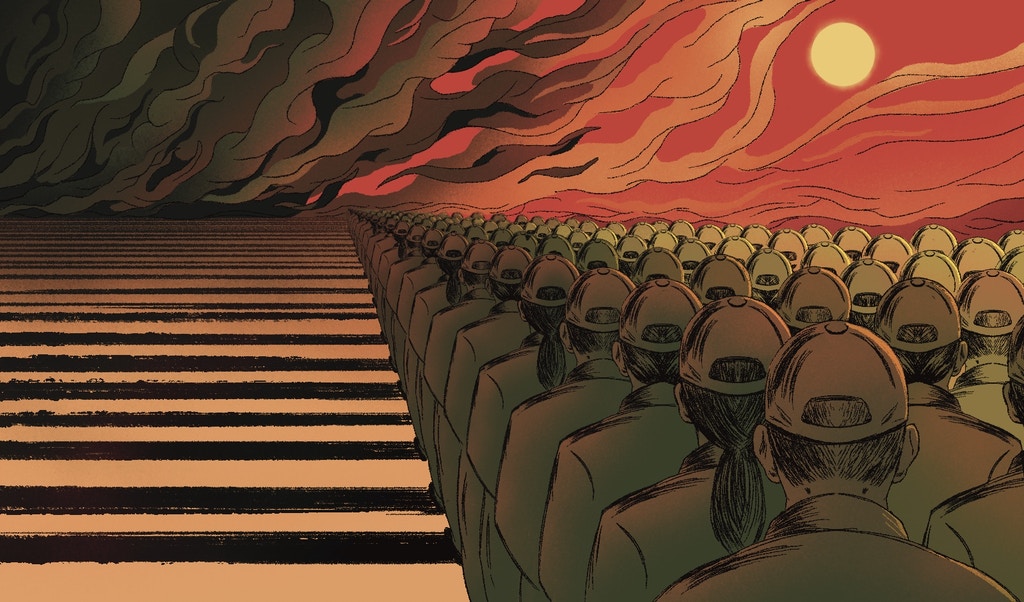
Illustration: Isip Xin for The Intercept
A Coal-Blackened Wasteland
Around a decade ago, factories in eastern China introduced the tiles that had so entranced Merth, the DIY influencer. Water-resistant, cheap, and lightweight, the innovation revolutionized the flooring industry. Laying down a floor became as simple as building with Legos; suddenly anyone could do it, no contractor required. American companies soon brought the Chinese-made flooring planks to market as luxury vinyl tile, calling the new assembly method “click and lock.” HGTV gushed that the new tiles were “Not Your Father’s Vinyl Floor.” Guests plugged them on the “Today” show and on “This Old House.” Between 2010 and 2020, according to shipping figures compiled by Material Research, U.S. imports of vinyl floors from China quintupled.
The combination of cheap fossil fuels and forced labor in the production of Chinese PVC proved impossible for American flooring companies to match.
American flooring factories couldn’t compete. Vallette, who has tracked the environmental effects of plastic flooring for years, has counted 18 factories that closed as manufacturing shifted overseas. The combination of cheap fossil fuels and forced labor in the production of Chinese PVC proved impossible for American flooring companies to match. More than 2,500 American workers lost their jobs. The U.S. brands remained, but only because they reinvented themselves as distributors in a complex global supply chain.
Into this upturned market came Zhongtai. Like many state-owned enterprises in China, Zhongtai has a web of subsidiaries. It produces chemicals used in polyester, spandex, and polyurethane, and it grows tomatoes, grapes, peppers, and cotton. But its main business is plastics. Zhongtai’s four factories in Xinjiang churn out more than two million tons of PVC resin per year.
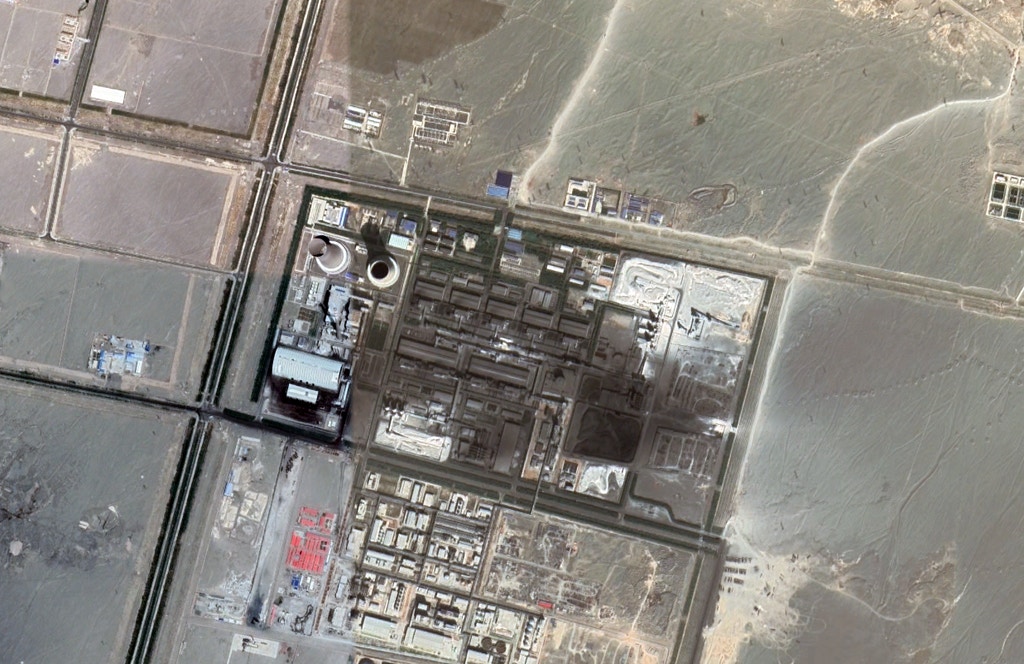
One of Zhongtai’s four PVC factories, where Uyghurs are exposed to toxic substances, including mercury and carcinogens.
Screenshot: Google Earth
In 2017, Zhongtai began bringing in Uyghurs to work at its factories. Many of these laborers were, like Matturdi, from poor villages in southern Xinjiang. Their journeys start when Zhongtai representatives show up at their door. “Companies like Zhongtai recruit workers through state-sponsored programs, and people are not allowed to refuse,” said Murphy, the forced labor scholar. In one instance reported by Chinese state news agency Xinhua, Zhongtai representatives repeatedly visited the home of a young woman named Maynur on the edge of Xinjiang’s Taklamakan Desert. Her parents balked at the thought of her leaving, but their protests were ultimately ignored. Before long, Maynur was operating packaging machines at a Zhongtai PVC factory.
The Chinese government euphemistically calls this a “labor transfer” program and claims that it is aimed at alleviating poverty in the region. But it has been rolled out against a backdrop of escalating repression. Since 2016, the Chinese government has interned more than 1 million Uyghurs and other ethnic minorities in inhumane camps. The government has separated Uyghur children from their parents, carting them away to boarding schools reminiscent of institutions in the U.S. and Canada to which Native American kids were taken beginning in the mid-19th century. It has locked up Uyghurs for imagined transgressions and seized their land. One of the report’s authors, Nyrola Elimä, has a cousin in prison and parents under house arrest. “They don’t like us,” she said of the Chinese government. “In their eyes, we don’t look like them. We’re different, so we’re the enemy.” Human Rights Watch says that the Chinese government’s persecution of Uyghurs amounts to crimes against humanity, making it a violation of international law.
Zhongtai’s executives are active participants in broader government repression in the Uyghur region, according to the report. In 2017, the company held an event devoted to “social stability” in which representatives encouraged Uyghurs to bring their thinking in line with that of the Communist Party. Zhongtai’s employees have helped the Chinese government surveil Uyghur villagers by collecting their personal details and entering them into a widely criticized policing app, according to a WeChat post by a local propaganda department. And Zhongtai executives often publicize their participation in the labor transfer program, allowing state news reporters to film Uyghurs as they arrive by bus or join in military drills. Such workers have reason to fear anyone affiliated with the company, which, as a state-owned enterprise, implicitly represents the Chinese government. When Uyghurs arrive at Zhongtai’s facilities, the company’s corporate communications show, Communist Party officials are often there to receive them.
After undergoing training at Zhongtai, Uyghurs are put to work feeding furnaces, mixing and crushing materials for PVC production, and handling caustic soda, a byproduct of the production process. They face respiratory hazards from coal and PVC dust in the air, neurological effects from mercury, and carcinogens from coal reacting with chlorine.
Forced study is another part of the program, both at Zhongtai and at other plants in the region that use Uyghur labor. Elimä collected state press news clips about Zhongtai that show Uyghurs in military garb, studying Chinese. Some talk woodenly about how happy they are, as if reading from a script. “Thanks to the Party and Zhongtai for giving us this good opportunity!” says one.
“Zhongtai sees it as a corporate success because they’ve managed to turn Uyghurs away from being farmers, away from their homogenous culture, away from their Islamic piety and toward a culture that is more industrialized, urbanized, and ideologically appropriate in the government’s view,” said Murphy.
“First-person testimony tells us that people are typically not paid or are even in debt to the companies they work for.”
State media reports claim that the workers are paid enough that they can send money home to their families. According to Xinhua, Maynur earned 4,000 yuan a month, equivalent to around $580 at the time of the article. But the Xinjiang Victims Database, an independent project that compiles accounts from victims of persecution in the region, has collected many stories from former Uyghur laborers and their relatives who paint a very different picture of working conditions in the region. “First-person testimony tells us that people are typically not paid or are even in debt to the companies they work for,” said Murphy. Companies often deduct money for food and housing — or they promise to pay salaries and don’t deliver. The article featuring Matturdi’s case says that each worker in his group had 1,000 yuan ($145 at the time) of their first monthly paycheck applied toward meals.
The workers suffered anew as a novel coronavirus spread through the world in 2020. Over a two-week period in March, as factories in other parts of China remained closed, Zhongtai boasted that it had brought in over 1,000 Uyghurs from poor villages to work on its assembly lines. Some, like Matturdi, were bused in. Others arrived by train, flooding into halls where it was impossible to maintain social distance, wearing only surgical masks for protection from the virus.
Zhongtai profited by keeping its factories open. As home decorating supply sales surged in the U.S., the company was poised to rake in further gains.
From Vietnam to America
In America, meanwhile, middle-class workers had more flexibility than ever before. Even after companies started reopening their offices, many chose to continue to work from home. The change ushered in a renovation boom. Basement dens became offices. Bathrooms got an overhaul. Bedrooms were split in two. As labor costs rose, people often made these alterations themselves, rather than shell out money for a contractor. In 2020 and 2021, Home Depot broke records, adding $40 billion to its overall sales.
Merth, the DIY influencer, was not alone in turning to vinyl flooring for her Covid home reboot. Pandemic-related concerns about hygiene drove a shift toward hard-surface flooring, particularly vinyl. A recent report from the nonprofit Center for Environmental Health found that in 2020 alone, the vinyl flooring that was shipped from China to the U.S. would cover over 1 million miles if laid out end to end. That’s long enough to stretch from Earth to the moon four times over.
And that’s not even the full picture. Other flooring very likely made with Chinese raw materials — including some of Home Depot’s Lifeproof floors — was arriving in the U.S. via Vietnam. Much of it came from a single factory: Jufeng New Materials.
The industry’s solution was to ship PVC from China to a third country and manufacture the flooring there before exporting it to the U.S.
In 2018, as part of his trade war with China, President Donald Trump slapped tariffs on Chinese-made floors, making it costly for U.S. flooring companies to import directly from China. The industry’s solution was to ship PVC from China to a third country and manufacture the flooring there before exporting it to the U.S. In 2020, an executive at Zhongtai told Chinese state media that the company was turning to Southeast Asia because “conditions there are more stable.” That same year, Zhongtai began working with a company in eastern China called Zhejiang Tianzhen, according to a prospectus that Zhejiang Tianzhen recently released in a bid to go public on the Shenzhen stock exchange.
Zhejiang Tianzhen had just set up Jufeng as a subsidiary, building a series of warehouses in an industrial park north of a bend in the Cau river. The sprawling complex resembled a series of airplane hangars with blue roofs. A sign outside featured Chinese characters, and three flags flew overhead: Vietnamese, American, and Chinese. Jufeng held regular job fairs, eventually employing around 1,000 workers, according to Vietnamese media.
Jufeng became a critical destination for Zhongtai’s plastics. From March 2020 to February 2022, the Vietnamese factory received enough PVC resins from Zhongtai to make over 16.3 million square meters of vinyl flooring, according to Vallette of Material Research.
In an email, Zhejiang Tianzhen said it bans the use of forced labor by its suppliers and places “great emphasis on supply chain compliance,” requiring suppliers to adhere to a code of conduct on labor rights. “We haven’t found any forced labor in our suppliers during regular visits,” the manufacturer wrote. “Our company will continue to keep an eye on the situation. If any evidence of forced labor is found, we will take quick action.”
From Vietnam, Jufeng exports finished floors all over the world, including to Home Legend, the Georgia-based company. Home Legend markets its flooring as “earth minded” and claims on its website to manage forests in China and to source wood and bamboo from sustainable sources. It outlines a commitment to social responsibility and to protecting people at every stage of the floor’s life cycle. The website says nothing about the pollutants released during the creation of its vinyl floors or about how the workers who make components of those floors are treated.
Home Legend, in turn, supplies Home Depot with flooring for its Lifeproof line. It was Home Depot that sent The Intercept a letter from a vice president at the Georgia floormaker stating Zhejiang Tianzhen had assured the company that “no PVC from the Xinjiang Uyghur Autonomous Region (XUAR) has been used in any Home Legend products sold to the Home Depot.”
The letter further claimed that on January 24, Jufeng’s parent company had instructed all of its PVC sourcing agents to stop buying PVC from Xinjiang.
The researchers say that’s a weak defense. Vallette noted that shipping records show that Jufeng received at least 12 shipments of PVC from Zhongtai after January 24, most recently on February 21. “The easiest way to protect consumers and these companies’ reputations would be to get all floors that are potentially containing resins produced by forced labor out of the country and return them to sender,” he said.
A Zhejiang Tianzhen representative declined to answer questions about why Jufeng had continued to import PVC from Xinjiang. “We apologize for not being able to answer your inquiry because it involves business secrets and confidentiality agreements between the company and the customer,” the representative wrote.
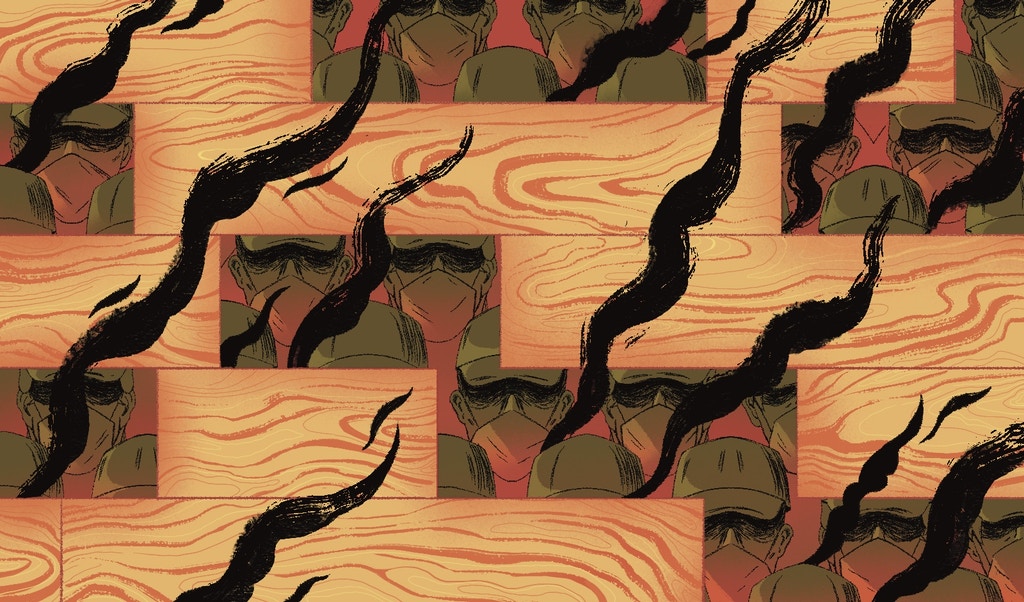
Illustration: Isip Xin for The Intercept
Staggering Toxicity
The fire that broke out in November spread quickly. Black smoke billowed into the night sky. Loud booms echoed through the air. Hundreds of soldiers and firefighters rushed to the scene. Within minutes, flames had consumed a Jufeng warehouse in Vietnam that stored PVC resins. Videos captured by witnesses show the structure burning to the ground.
The next day, the site was still smoldering. Exhausted firefighters stood by, wearing gas masks, weakly spraying the remains.
There is no evidence that workers were harmed in the fire, but the blaze released cancer-causing dioxins into the air and put firefighters and bystanders at risk. It could also have long-term effects. After a 1995 fire at a plastics warehouse in Binghamton, New York, dioxin levels in the soil were over 100 times higher than at other locations in the same community. In general, the disaster shows just how dangerous working with PVC can be. The chemicals involved are highly flammable. In this case, according to the Zhejiang Tianzhen prospectus, the fire was caused by an electrical problem. A Vietnamese government report subsequently found that Jufeng had not taken proper precautions, like conducting fire drills.
Workers and the people who live in surrounding neighborhoods are at risk even when factories aren’t burning. “All plastics carry significant toxic risks of one kind or another,” said Carroll Muffett, president of the Center for International Environmental Law, who is not affiliated with the organizations that produced the report. “But PVC is remarkable in the staggering toxicity that occurs at every stage of its lifecycle. We see massive quantities of hazardous air pollutants being released into surrounding communities, which are disproportionately poor and marginalized.”
The fire at Jufeng’s Vietnamese plant slashed $11.5 million off Zhejiang Tianzhen’s profits, according to the IPO prospectus. But satellite images show that Jufeng’s other warehouses remained untouched. Zhejiang Tianzhen claimed that its Vietnamese plants were humming again the next day. In the months following the fire, the company’s shipments to the U.S. actually increased.
In the first quarter of 2022, the Sheffield Hallam and Material Research report says, Jufeng sent 5,200 shipments of PVC flooring to the U.S., worth a total of $80 million. Nearly one quarter of that flooring — $17.2 million worth — went to Home Legend and bore product codes matching those sold by Home Depot.
Once the Uyghur Forced Labor Prevention Act comes into full effect next week, the researchers worry that manufacturers will find other workarounds. Last month, four members of Congress asked the House and Senate appropriations committees for expanded funding to enforce the law.
But on Home Depot’s responsibility, Murphy is resolute. Consumers, she said, have a right to know. “We need to know that the things we’re buying aren’t cheap simply because someone else is being forced to work.”
Zhongtai, for its part, recently announced plans to build a fifth, even bigger plant in Xinjiang. When the new facility is complete and running at full capacity, Zhongtai’s PVC factories will spew an estimated 49 million tons of carbon dioxide into the atmosphere each year. More difficult to measure is the human toll: the children separated from their parents, the workers who contract cancer decades later, the Uyghurs who lose the most productive years of their lives, all so that Americans can cheaply redo their home offices.
Additional reporting by Myf Ma


